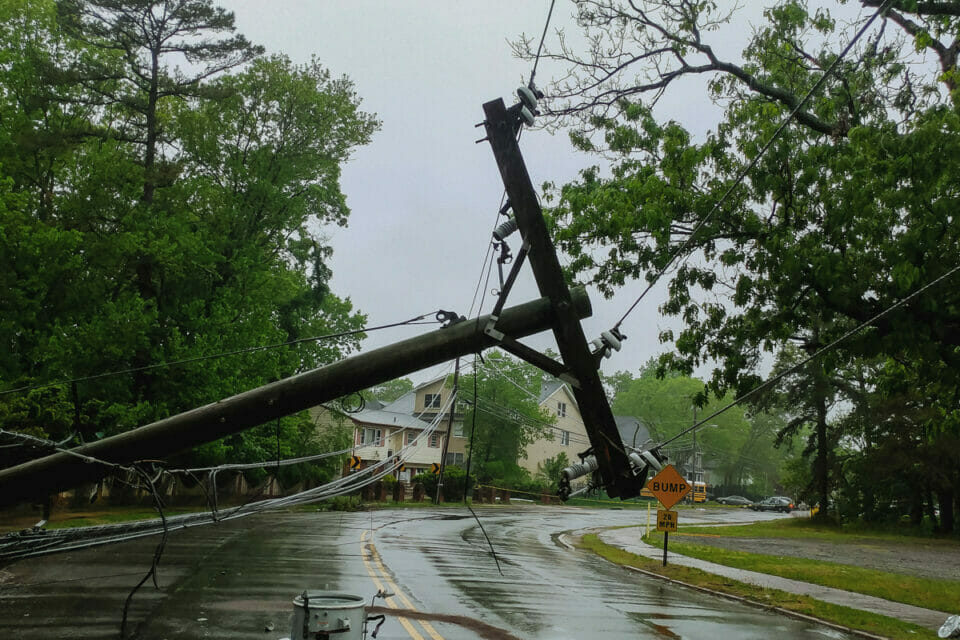
Holiday Bonus Episode: Safety Tips You Need This Season | Risk Matrix Episode 122
THE RISK MATRIX Cutting-edge podcast on occupational safety and risk management. Hosted by industry titans: JAMES JUNKIN, MS, CSP, MSP,…
Discover essential strategies, such as proactive planning and communication tactics, to prevent business disruption in the face of disasters.

In recent years, the increased occurrence of major disaster events has become a sobering reality. From natural calamities such as earthquakes, hurricanes, wildfires, and floods to human-made catastrophes like terrorist attacks and pandemics, the potential for large-scale disruptions is ever-present. Considering this, the significance of comprehensive disaster preparedness to reduce risk to people and to manage a business disruption cannot be overstated.
Preparing for a major disaster event requires a multidimensional approach that encompasses proactive planning, resource management, community engagement, and continuous learning. This article delves into the strategies and considerations essential for effectively preparing for a major disaster event.
The first step in disaster preparedness is understanding the nature of potential disasters. Different types of disasters have varying impacts and require distinct responses. Natural disasters, for instance, can include earthquakes, tsunamis, hurricanes, tornadoes, and wildfires.
On the other hand, human-made disasters encompass events such as industrial accidents, acts of terrorism, cyberattacks, and pandemics. Each disaster type necessitates a tailored preparation strategy that considers its unique characteristics, risks, and potential consequences.
For businesses, having comprehensive plans in place to mitigate a business disruption through disaster preparedness takes on a major significance. In an era marked by increased complexities and rapid shifts in the business landscape, the ability to navigate the challenges posed by disasters is integral to sustaining operational continuity, preserving stakeholder trust, and keeping employees safe.
By proactively addressing potential disruptions, businesses not only demonstrate their commitment to upholding the highest standards of operational resilience but also ensure that their services remain consistent and dependable, even in the face of the most daunting disaster scenarios.
Proactive planning is the cornerstone of effective disaster preparedness and is key to managing a business disruption. This involves formulating comprehensive response and recovery plans that outline roles, responsibilities, and actions to be taken before, during, and after a disaster. These plans should cover various aspects such as communication protocols, resource allocation, evacuation procedures, medical response, and infrastructure resilience.
A critical component of proactive planning is the establishment of an Emergency Operations Center that will serve as a “central command post” during a disaster, facilitating communication and coordination among different response agencies. It also aids in real-time decision-making, to ensure resources are allocated where they are needed most.
Community resource management is crucial in disaster preparedness as it determines the efficiency and effectiveness of response efforts. It protects people, including your workers. Adequate resources must be stockpiled and strategically located to ensure a swift response. These resources include food, water, medical supplies, emergency equipment, and shelter materials. Collaborations with local businesses, non-governmental organizations, and international aid agencies can supplement government resources.
One challenge in resource management is the allocation of resources in a fair and equitable manner. Vulnerable populations, such as the elderly, children, and people with disabilities, require special attention and tailored assistance. Additionally, ethical considerations should guide decisions about resource distribution to ensure that no group is disproportionately disadvantaged.
Communities play a pivotal role in disaster preparedness. Engaging and educating the public about potential risks and appropriate responses can significantly enhance overall resilience. Community members and businesses should be informed about evacuation routes, emergency shelters, communication channels, and disaster supply kits. Regular drills and training sessions can familiarize individuals with the necessary actions to take in various disaster scenarios. Ensuring your workers are trained and prepared will help you manage a business disruption caused by a local emergency.
Moreover, fostering a sense of community cohesion is vital. When people are connected and have strong social networks, they are more likely to support one another during times of crisis. Community-based organizations, local leaders, and schools can serve as platforms for disseminating information and promoting community bonding.
Effective communication is a linchpin in disaster preparedness and response. To mitigate risk to the public, and avoid a major business disruption for local companies, a robust communication strategy should encompass both internal and external communication channels. Internally, it ensures that different response agencies, government departments, and organizations can share critical information seamlessly. Externally, it enables authorities to communicate accurate information to the public, reducing panic and confusion.
In the digital age, social media and other online platforms have become indispensable tools for disseminating information rapidly. However, authorities must exercise caution to prevent the spread of misinformation, which can exacerbate the situation. Clear and consistent messaging is essential to maintain public trust and confidence.
Disaster preparedness is not a one-time endeavor but a continuous process that requires learning from past experiences. After every disaster, a thorough assessment should be conducted to identify strengths and weaknesses in the response. Lessons learned should inform updates to response plans, resource allocation strategies, and communication protocols.
Furthermore, interdisciplinary collaboration is invaluable. Engaging experts from various fields such as emergency management, public health, engineering, and psychology can provide diverse perspectives and innovative solutions. Interdisciplinary research can also contribute to a deeper understanding of the complex dynamics of disasters and inform more effective strategies. This is an opportunity to continuously refine your disaster preparedness plan to reduce the chance of a major business disruption in the future.
Disasters often transcend national boundaries, necessitating local, state, federal, and global cooperation. Sharing best practices, resources, and expertise across boundaries within agencies and businesses can bolster overall disaster resilience. Mutual aid agreements play crucial roles in fostering collaboration and coordination.
In the face of a major disaster event, neighboring communities can provide critical support, such as search and rescue teams, medical personnel, and humanitarian aid. Political efforts and pre-established agreements can streamline the process of requesting and receiving much-needed, timely assistance. Sharing knowledge across borders, and throughout your supply chain will be valuable in planning for the future.
Amid the physical and logistical aspects of disaster preparedness, the psychological and emotional well-being of your workers and their families should not be overlooked. Experiencing a disaster can be traumatic, leading to feelings of fear, anxiety, and grief. Providing psychological support through counseling services, community support groups, and mental health professionals is essential for helping individuals cope with the emotional aftermath of a disaster.
In a world where major disaster events are a persistent threat, effective disaster preparedness is imperative. By understanding the nature of different disasters, engaging in proactive planning, managing resources efficiently, educating communities, implementing communication strategies, promoting continuous learning, fostering international cooperation, and considering psychological well-being, societies can enhance their resilience and ability to respond to crises.
Ultimately, disaster preparedness is a collective responsibility that requires the collaboration of governments, organizations, communities, businesses, and individuals to ensure a safer and more resilient future.
Contact us today to learn more.


THE RISK MATRIX Cutting-edge podcast on occupational safety and risk management. Hosted by industry titans: JAMES JUNKIN, MS, CSP, MSP,…

THE RISK MATRIX Cutting-edge podcast on occupational safety and risk management. Hosted by industry titans: JAMES JUNKIN, MS, CSP, MSP,…
We’ll send you practical and insightful supply chain risk management info that can benefit your business. Plus, important company updates that keep you in the loop.
